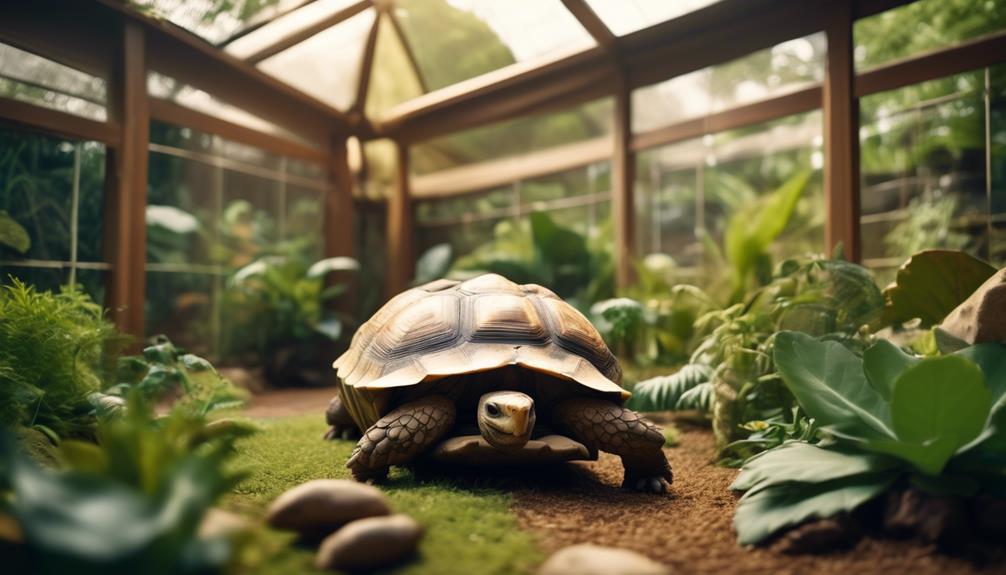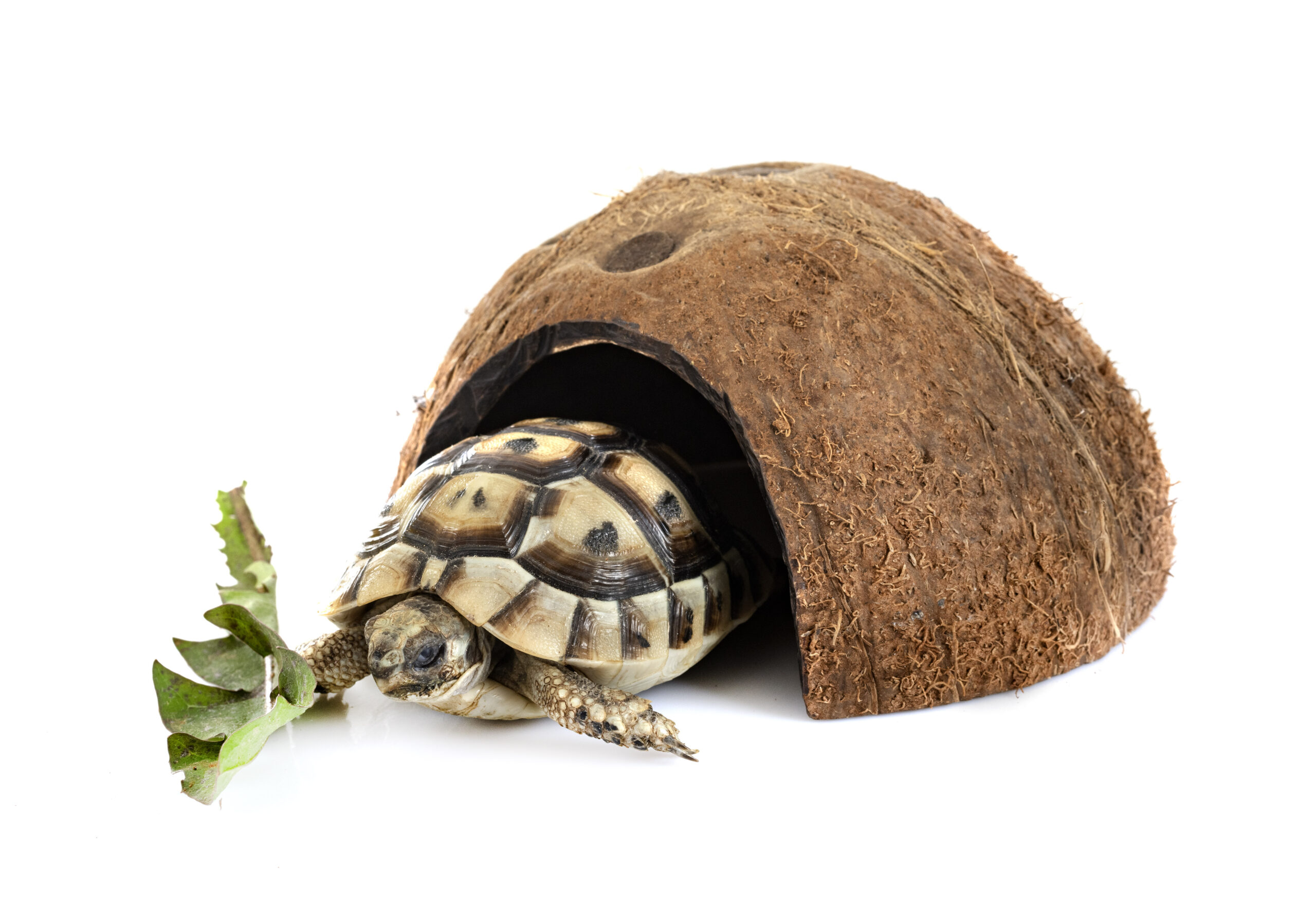If you’ve ever wondered how a cold-blooded animal like a tortoise survives in different temperatures, this article is for you. In this guide, we will explore everything you need to know about tortoise thermoregulation, including what it means to be cold-blooded, how tortoises regulate their body temperature, differences between cold-blooded and warm-blooded animals, and the impact of temperature on tortoise egg development and hatching. We’ll also look at the role of thermoregulation in tortoise behavior, the effect of climate change on tortoises and other cold-blooded animals, and the importance of maintaining an ideal temperature range for tortoises.
Are Tortoises Cold-Blooded?
- Tortoises are cold-blooded animals that regulate their body temperature through external environmental factors.
- Thermoregulation is essential to their survival and influences their behavior, breeding, and habitat management.
- The impact of climate change on tortoises and other cold-blooded animals highlights the importance of human intervention and conservation efforts.
What Does it Mean to be Cold-Blooded?
Cold-blooded animals, also known as ectothermic animals, are creatures that rely on external sources of heat to regulate their body temperature. This means that their body temperature fluctuates with the temperature of their environment. Unlike warm-blooded animals, such as mammals and birds, they do not generate their own heat through metabolism.
Cold-blooded animals have a lower metabolic rate than warm-blooded animals, which means they require less energy to survive. They are also more adaptable to changing environments, as they can slow down their metabolism and conserve energy when food and water are scarce. However, they are more vulnerable to extreme temperatures, as they cannot maintain a constant body temperature.

How Tortoises Regulate Their Body Temperature
Tortoises are one of the most well-known examples of cold-blooded animals. They have a remarkable ability to regulate their body temperature through behavior and habitat selection. Tortoises rely on external sources of heat, such as the sun, to warm up their bodies. When they are too hot, they retreat to the shade or burrow underground to cool off.
Tortoises are known for their basking behavior, which involves lying in the sun to warm up their bodies. They stretch their legs out and raise their shells to expose as much of their body surface to the sun as possible. This behavior not only warms up their bodies but also stimulates digestion and vitamin D production.
On the other hand, when it gets too hot, they seek out cooler areas to avoid overheating. They may retreat to the shade or burrow underground, where the temperature is more stable. In this way, tortoises are able to maintain an ideal body temperature range that allows them to function properly.
Differences between Cold-Blooded and Warm-Blooded Animals
One of the key differences between cold-blooded and warm-blooded animals is their metabolic rate. Cold-blooded animals have a lower metabolic rate than warm-blooded animals, which means they require less energy to survive. They are also more adaptable to changing environments, as they can slow down their metabolism and conserve energy when food and water are scarce. In contrast, warm-blooded animals have a higher metabolic rate, which means they require more energy to survive. They are less adaptable to changing environments, as they cannot slow down their metabolism to conserve energy.
Another difference is their ability to deal with changes in temperature. Cold-blooded animals are more adaptable to changes in temperature, as they can regulate their body temperature through behavior and habitat selection. They are also better able to withstand extreme temperatures, such as freezing or overheating. In contrast, warm-blooded animals have a more limited ability to regulate their body temperature, which makes them more vulnerable to extreme temperatures.
There are advantages and disadvantages to being cold-blooded. One advantage is that cold-blooded animals require less energy to survive, which makes them more efficient in their use of resources. They are also better adapted to changing environments, as they can adjust their metabolism to conserve energy. However, they are more vulnerable to extreme temperatures and may have limited activity levels in cooler temperatures. Warm-blooded animals, on the other hand, have a more consistent body temperature and can be active in a wider range of temperatures. However, they require more energy to survive and are less adaptable to changing environments.
Other Cold-Blooded Animals Apart from Tortoises
Tortoises are just one example of a cold-blooded animal. There are many other examples, including lizards, snakes, and frogs. Like tortoises, these animals rely on external sources of heat to regulate their body temperature. They may bask in the sun or retreat to the shade to avoid overheating. Some species, such as the wood frog, have the ability to freeze solid in the winter and thaw out in the spring.
Each species has its own unique adaptations for surviving in different environments. For example, some lizards have the ability to change color to blend in with their surroundings, while some frogs have the ability to secrete toxins to deter predators.

The Impact of Temperature on Tortoise Egg Development and Hatching
Temperature plays a critical role in the development and hatching of tortoise eggs. The ideal temperature range for incubation varies depending on the species of tortoise. However, most species require a temperature range between 80 and 90 degrees Fahrenheit.
Temperature changes can have a significant impact on the development of tortoise eggs. If the temperature is too low, the embryos may not develop properly or may take longer to hatch. If the temperature is too high, the embryos may develop abnormally or die. This is why it is important to maintain a consistent temperature range during incubation.
The temperature during incubation also affects the sex of the hatchlings. In many species, the temperature determines whether the offspring will be male or female. For example, in some species, a temperature range of 84 to 86 degrees Fahrenheit produces mostly females, while a temperature range of 88 to 90 degrees Fahrenheit produces mostly males.

The Role of Thermoregulation in the Behavior of Tortoises
Thermoregulation plays a critical role in the behavior of tortoises. It influences their activity levels, feeding behavior, and social interactions. For example, tortoises are more active during the day when the sun is out and may retreat to their burrows at night or during cooler temperatures. They also tend to feed more during the day when their body temperature is higher and may reduce their feeding during cooler temperatures.
Thermoregulation also affects the social behavior of tortoises. During the breeding season, males may engage in combat to establish dominance and access to females. They may also engage in courtship behavior, such as head-bobbing or circling, to attract females. Thermoregulation also affects the behavior of hatchlings, who may bask in the sun to warm up their bodies and avoid predators.

The Effect of Climate Change on Tortoises and Other Cold-Blooded Animals
Climate change is having a significant impact on the survival of tortoises and other cold-blooded animals. Rising temperatures are affecting their habitat, food sources, and breeding patterns. For example, in some areas, temperatures are becoming too hot for tortoises to survive, which is leading to declines in their populations. Changes in temperature are also affecting the timing of breeding and hatching, which can have significant impacts on the survival of offspring.
In addition to rising temperatures, climate change is also affecting other aspects of the environment that are critical for the survival of cold-blooded animals. For example, changes in rainfall patterns can affect the availability of water, which is essential for many species. Changes in the timing of seasons can also affect the availability of food sources and the timing of migration.
Personal Story: The Importance of Thermoregulation for My Pet Tortoise
When I first got my pet tortoise, I didn’t realize how important it was to maintain an ideal temperature range for her. I thought that since she was a reptile, she could handle any temperature. However, I soon learned that tortoises are cold-blooded animals and rely on external sources of heat to regulate their body temperature.
One summer day, I left my tortoise outside in the sun for too long. When I came back to check on her, she was lethargic and unresponsive. I immediately brought her inside and realized that she had overheated due to the lack of shade and water. I quickly provided her with a shaded area and a bowl of water to help her cool down.
After this incident, I made sure to monitor my tortoise’s thermoregulation behavior closely. I created a habitat that mimicked her natural environment, with a basking area and a shaded area, as well as a water source for her to cool down in. I also invested in a thermometer to monitor the temperature in her habitat and made sure that it stayed within the ideal range.
Thanks to these changes, my tortoise has been thriving. She is active and alert, and her shell has grown stronger and healthier. I’ve learned that maintaining an ideal temperature range is crucial for the health and well-being of my pet tortoise, and I will continue to prioritize her thermoregulation needs in the future.
The Importance of Maintaining an Ideal Temperature Range for Tortoises
Maintaining an ideal temperature range is critical for the survival of tortoises. In the wild, tortoises rely on external sources of heat to regulate their body temperature. In captivity, it is important to provide them with a basking area and a cooler area to retreat to when it gets too hot. This allows them to maintain an ideal body temperature range and function properly.
Habitat management practices can also help maintain an ideal temperature range for tortoises. For example, planting vegetation that provides shade can help keep the temperature cooler in certain areas. Providing water sources can also help regulate the temperature and provide a source of hydration.
Captive breeding programs also play an important role in maintaining the survival of tortoises. These programs often involve temperature monitoring to ensure that the incubation temperature is consistent and within the ideal range for the species. This can help increase the survival rate of hatchlings and ensure the genetic diversity of the population.
Conclusion
In conclusion, tortoise thermoregulation is a fascinating subject that plays a critical role in their survival. Tortoises are cold-blooded animals that rely on external sources of heat to regulate their body temperature. They have a remarkable ability to maintain an ideal body temperature range through behavior and habitat selection. Temperature plays a critical role in the development and hatching of tortoise eggs and influences their behavior, social interactions, and activity levels.
Climate change is having a significant impact on the survival of tortoises and other cold-blooded animals. Rising temperatures are affecting their habitat, food sources, and breeding patterns. Maintaining an ideal temperature range is critical for the survival of tortoises, both in the wild and in captivity. It is important to continue research and support for the conservation of tortoises and other cold-blooded animals to ensure their survival for future generations. And to answer the question “Are tortoises cold-blooded?” – yes, they are.







